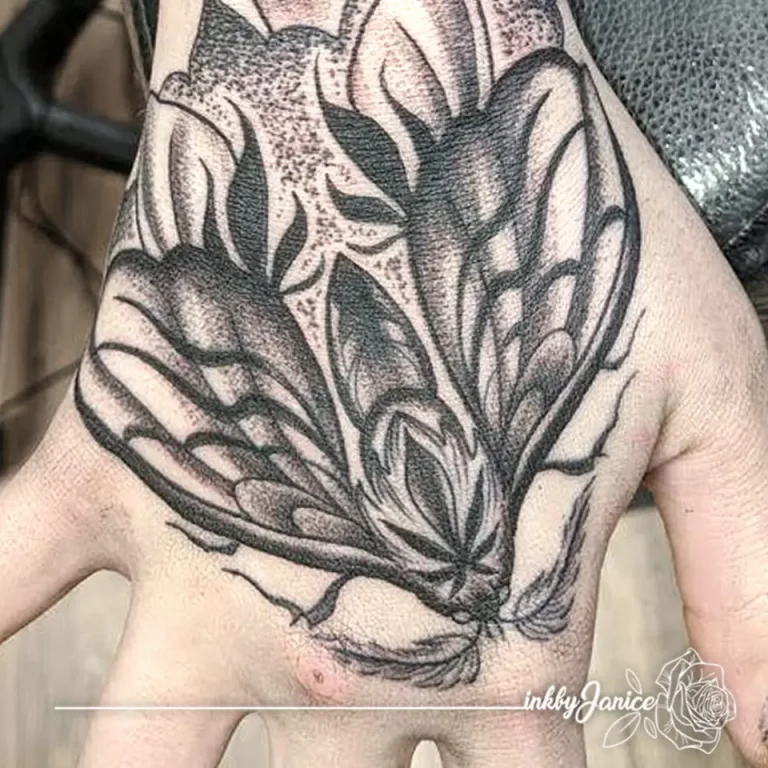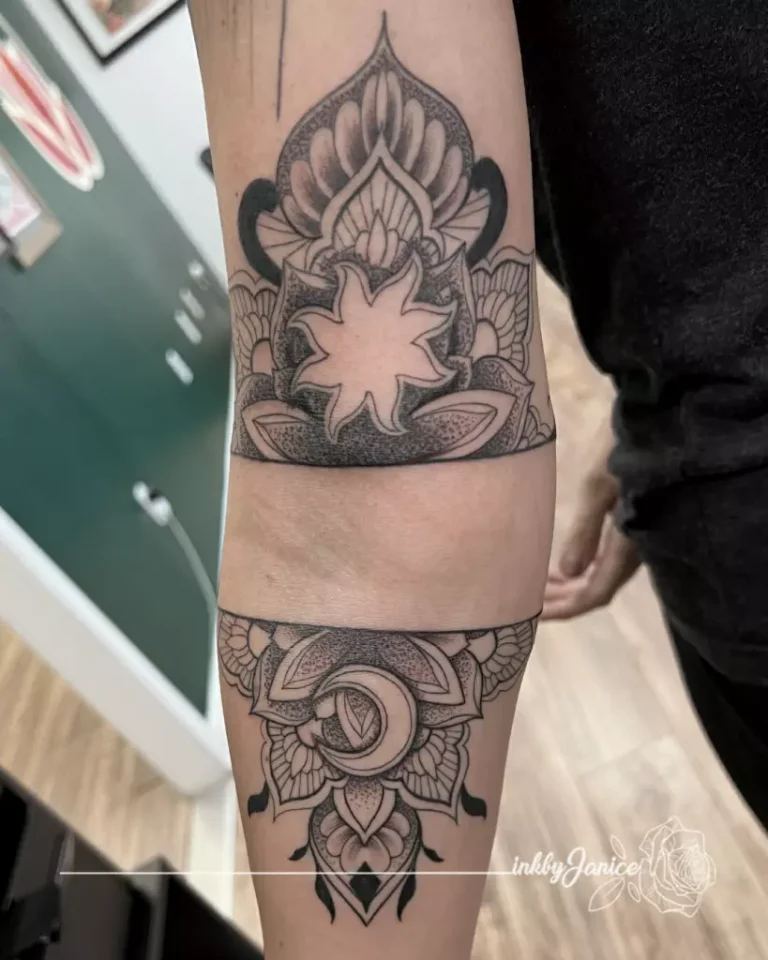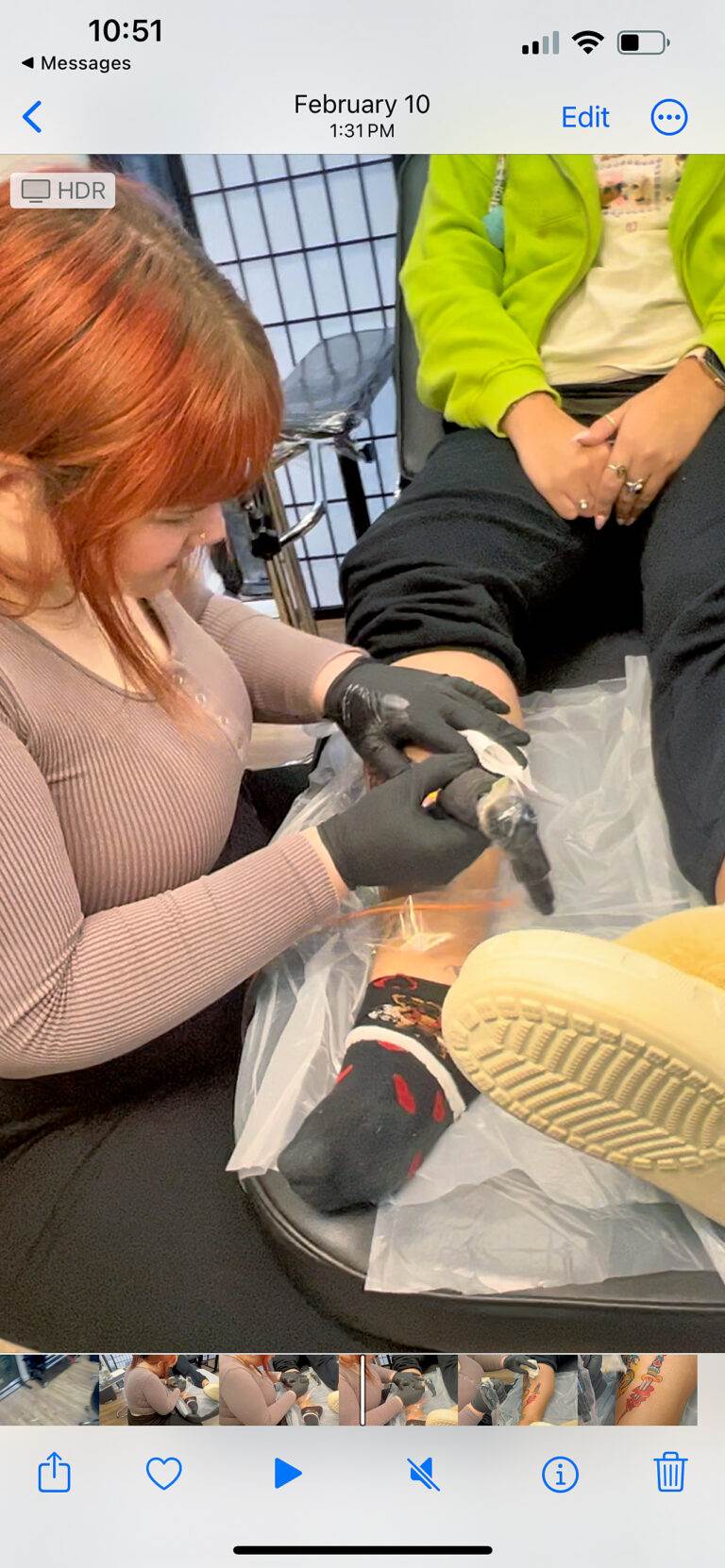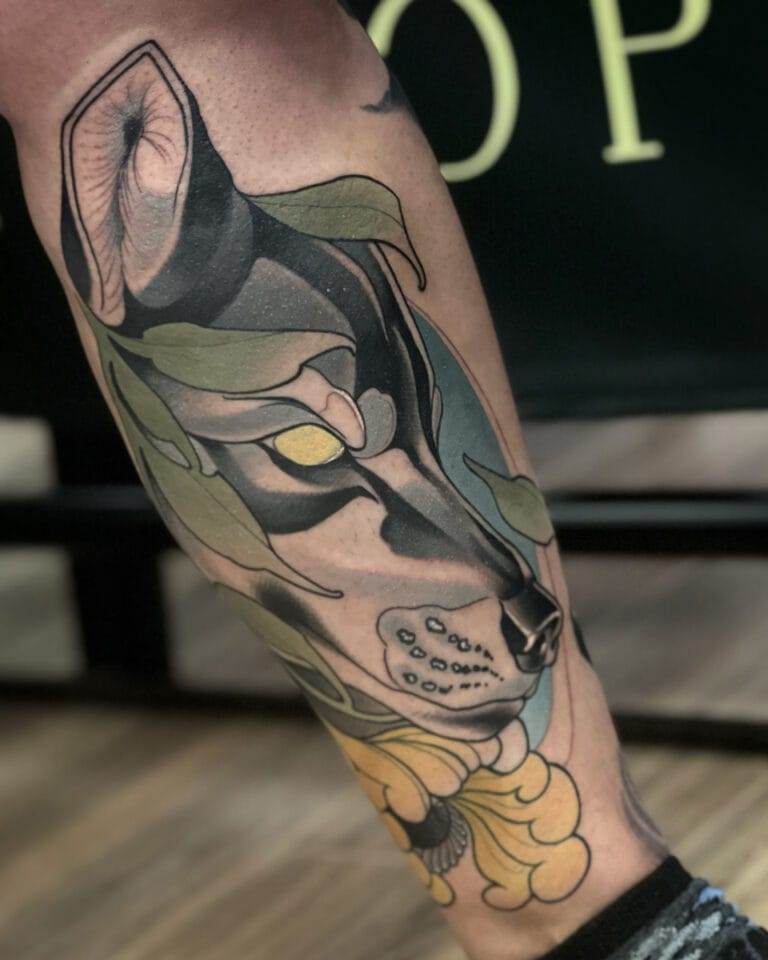Introduction
In the world of body art, tattoos stand out as a unique form of self-expression. As individuals explore their identity through ink, two prominent styles often take center stage: realism and traditional tattoos. Each of these styles offers distinct characteristics and holds its own allure, captivating those who choose to wear them.
Why Choose a Tattoo?
People opt for tattoos for various reasons, including:
- Personal Expression: A way to convey beliefs, experiences, or identity.
- Commemoration: Honoring important moments or loved ones.
- Aesthetic Appeal: The beauty and artfulness of tattoos themselves.
Selecting the right tattoo style is crucial, as it reflects not only one’s personality but also the story one wishes to tell. In this article, we will delve deeper into the intricacies of realism and traditional tattoos, exploring their techniques, aesthetics, and much more.
Understanding Realism Tattoos
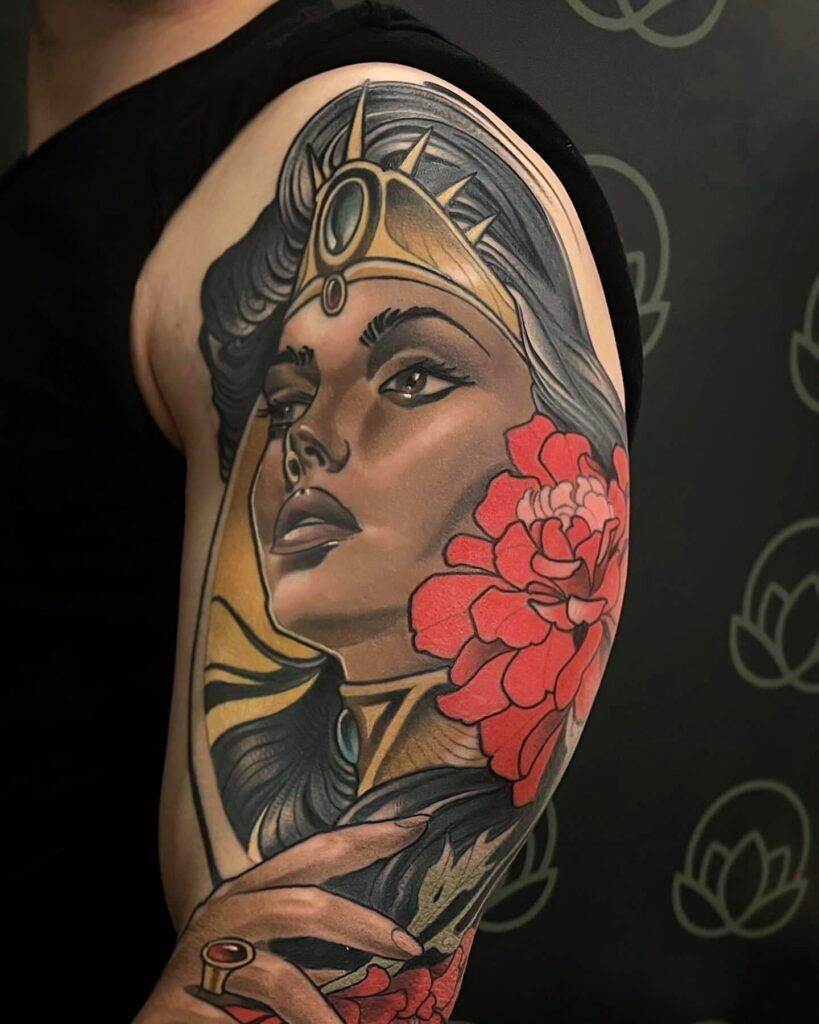
Realism Tattoo Techniques
As we venture deeper into the realm of tattoos, realism emerges as a captivating style characterized by its lifelike representation. Realism tattoos strive to capture not just the appearance but also the essence of the subject, transforming skin into a canvas that tells a story.
Key Techniques
The art of realism involves several techniques that enhance the overall effect:
- Shading: Artists use varying shades of ink to create depth and dimension, making designs pop.
- Color Theory: Understanding how colors interact allows for a more vivid portrayal of subjects.
- Fine Detailing: Layering tiny details ensures the tattoo resembles a photograph rather than a simplistic drawing.
Ultimately, the goal of realism is to evoke emotion and admiration, making each piece a personal masterpiece that resonates with the wearer and onlookers alike.
Exploring Traditional Tattoos
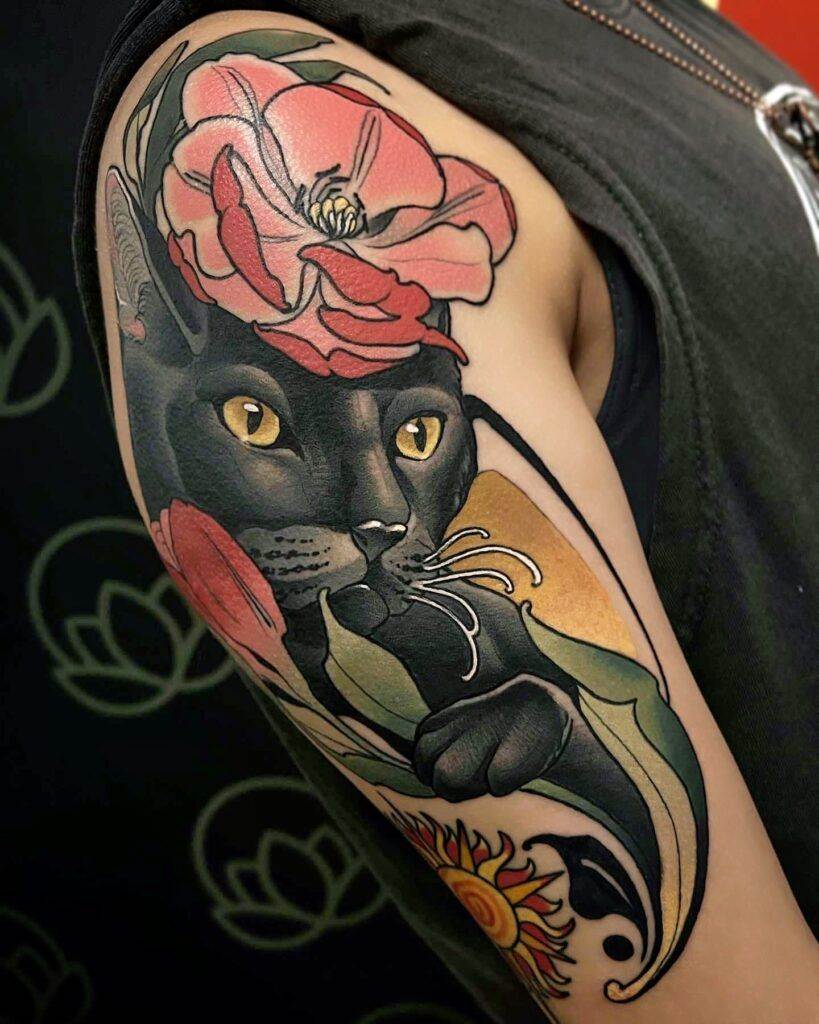
History of Traditional Tattoos
Transitioning from the intricate world of realism, traditional tattoos offer a storied past that reflects cultural heritage and symbolism. This style, often marked by bold lines and vibrant colors, has been a significant form of expression across various cultures for centuries.
Key Historical Highlights
- Ancient Civilizations: From the Maori in New Zealand to indigenous tribes in North America, traditional tattoos often served as rites of passage, representing milestones in an individual’s life.
- Nautical Roots: Sailors in the 18th century popularized traditional tattoo motifs, like anchors and swallows, as symbols of hope and safe passage.
- Cultural Significance: Many traditional designs embody rich symbolism, such as dragons representing strength or roses symbolizing love and beauty.
Traditional tattoos continue to resonate with individuals, inviting them to connect with the art form’s historical and cultural significance while making it uniquely their own.
Realism vs. Traditional: Aesthetics Comparison
As we dive deeper into the artistry of tattoos, a fascinating comparison unfolds between realism and traditional styles. Each boasts unique aesthetics that cater to varying tastes and preferences.
Aesthetic Distinctions
- Realism: Often characterized by lifelike details, realism tattoos mimic photographs, showcasing intricate shading and vibrant colors. The intent is to evoke emotions and capture the essence of the subject.
- Traditional: Bold lines and solid colors define the traditional style, often incorporating iconic imagery like skulls, roses, and nautical themes. Its simplicity strikes a balance between artistry and symbolism, making it timeless.
Personal Preference
When choosing between these styles, consider the intended message and visual appeal. Realism captivates those drawn to depth and complexity, while traditional tattoos resonate with individuals who appreciate heritage and symbolism. The choice ultimately reflects personal expression, making tattoo artistry a unique journey for everyone involved.
Different Approaches to Color
Following the aesthetics comparison, color usage plays a pivotal role in defining the character of realism and traditional tattoos. Each style employs color in distinctive ways to enhance its visual impact and storytelling.
Color in Realism Tattoos
In realism tattoos, color is utilized meticulously to create lifelike representations. Artists focus on:
- Shading Techniques: Gradual color transitions give dimension and depth, making designs appear three-dimensional.
- Natural Color Palettes: Realism often mimics the true colors of the subject matter, whether it’s the vibrant hues of a flower or the subtle tones of a portrait.
Color in Traditional Tattoos
Conversely, traditional tattoos embrace bold, vibrant colors that are instantly recognizable. Key elements include:
- Flat Color Application: Colors are applied in solid blocks, enhancing visual clarity.
- Symbolic Color Choices: Colors often carry meanings, such as red representing love or blue symbolizing loyalty.
Whether capturing lifelike beauty or striking simplicity, the approach to color in each tattoo style contributes significantly to its overall impression and meaning.
Time and Costs Considerations
As one navigates the world of tattoos, understanding the time and cost implications of each style becomes essential. Realism and traditional tattoos vary significantly in both time investment and financial commitments.
Time Considerations
- Realism Tattoos: Creating a realistic tattoo often requires meticulous attention to detail, which can result in longer sessions. A single piece may take several hours or even multiple appointments to complete.
- Traditional Tattoos: These designs typically involve quicker sessions due to their less intricate nature. A traditional tattoo can often be completed in a single sitting, often taking just a few hours based on the size.
Cost Considerations
- Realism Tattoos: Costs are often higher, reflecting the skill and time of the artist, typically ranging from $150 to $300 per hour based on complexity.
- Traditional Tattoos: Generally more budget-friendly, these can range from $100 to $200 for simpler designs.
Understanding these considerations helps potential clients make informed decisions about their tattoo journey, balancing style with practicality.
Pain Level Comparison
Transitioning from the considerations of time and cost, understanding the potential pain associated with getting a tattoo is vital for anyone contemplating this form of body art. The pain experienced can vary significantly between realism and traditional tattoos.
Pain Levels in Realism Tattoos
- Detailed Techniques: Since realism tattoos are often more intricate and require multiple shading techniques, they may cause more discomfort over longer sessions.
- Areas Affected: Detail work can be particularly sensitive in areas with less flesh and more nerve endings, such as the ribs or elbows.
Pain Levels in Traditional Tattoos
- Shorter Sessions: Traditional tattoos generally involve bolder lines and less elaborate shading, making them feel quicker and potentially less painful in many cases.
- Broad Application: The solid color application can be less taxing on the skin, especially for larger designs.
Ultimately, pain tolerance varies from person to person, making it essential for individuals to consider their own comfort levels when choosing a tattoo style. Preparing mentally and physically can significantly impact the tattoo experience.
Choosing the Right Style for You
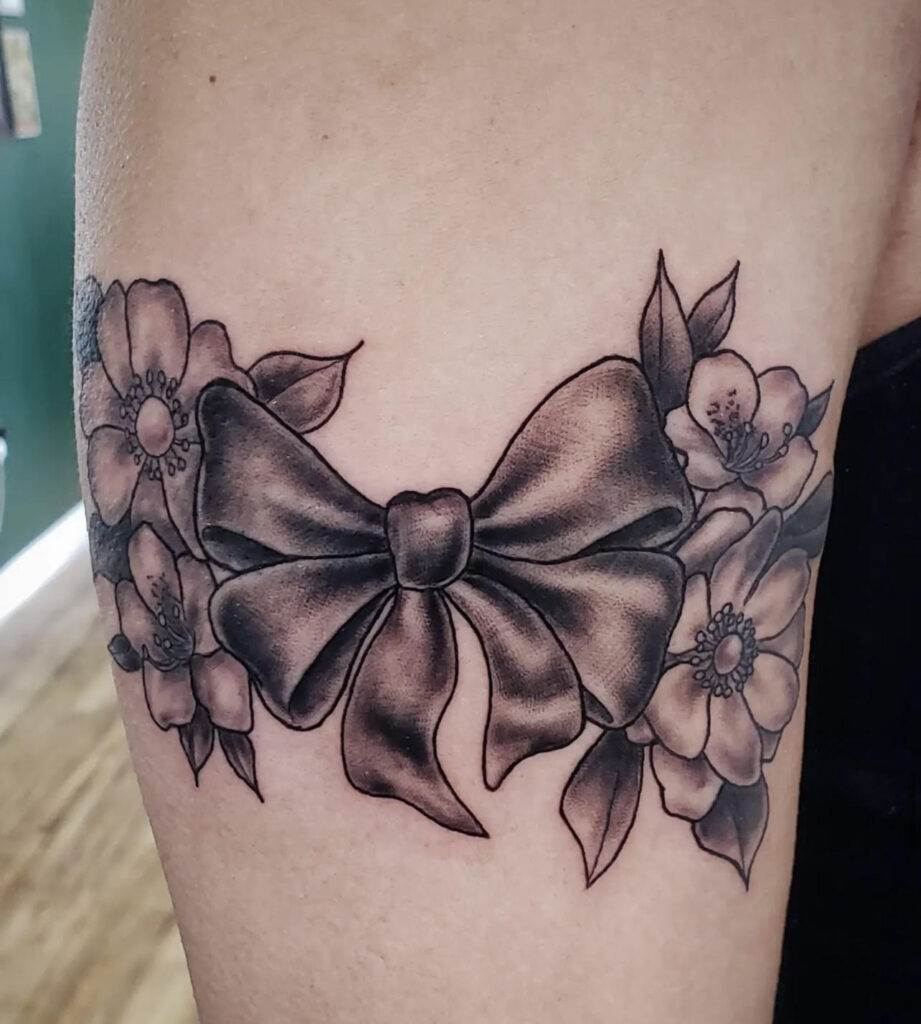
Having explored the intricacies of realism and traditional tattoos, the next step is determining which style aligns best with your personal expression and aesthetic preferences. Making an informed choice is crucial for ensuring satisfaction with your tattoo.
Consider Your Preferences
- Visual Appeal: Take time to look at examples of both styles. Do you find yourself drawn to the lifelike details of realism, or does the bold simplicity of traditional art resonate more with you?
- Meaning and Symbolism: Reflect on what you want your tattoo to convey. If you seek deep emotional or personal significance, realism may be ideal. For those looking for iconic symbolism, traditional tattoos can effectively communicate messages through their designs.
Personal Reflection**
Reflecting on your values, interests, and the story you want your tattoo to tell can guide you in choosing the right style. Remember, this decision is deeply personal, so prioritizing what feels right for you is essential in your tattoo journey.
Popular Tattoo Designs in Each Style
As you finalize your decision between realism and traditional tattoos, exploring popular designs within each style can provide further clarity and inspiration. Different motifs resonate with different emotions and stories, allowing individuals to express themselves through artfully crafted ink.
Popular Designs in Realism Tattoos
- Portraits: Capturing the essence of loved ones or iconic figures, portraits are a popular choice for deep personal connections.
- Wildlife: Animals, such as wolves or eagles, are common as they symbolize strength and freedom, often rendered with incredible detail.
- Nature Scenes: Realistic landscapes or floral arrangements appeal to those who cherish the beauty of nature.
Popular Designs in Traditional Tattoos**
- Skulls: These are often used to symbolize mortality and the transient nature of life.
- Roses: A classic choice representing love, passion, and beauty, rendered with bold outlines and vibrant colors.
- Nautical Symbols: Anchors, ships, and swallows are favored for their meanings of hope, adventure, and safe journeys.
Ultimately, choosing a design that resonates with your personal story can make your tattoo an even more meaningful work of art.
Artist Selection: Finding the Right Match
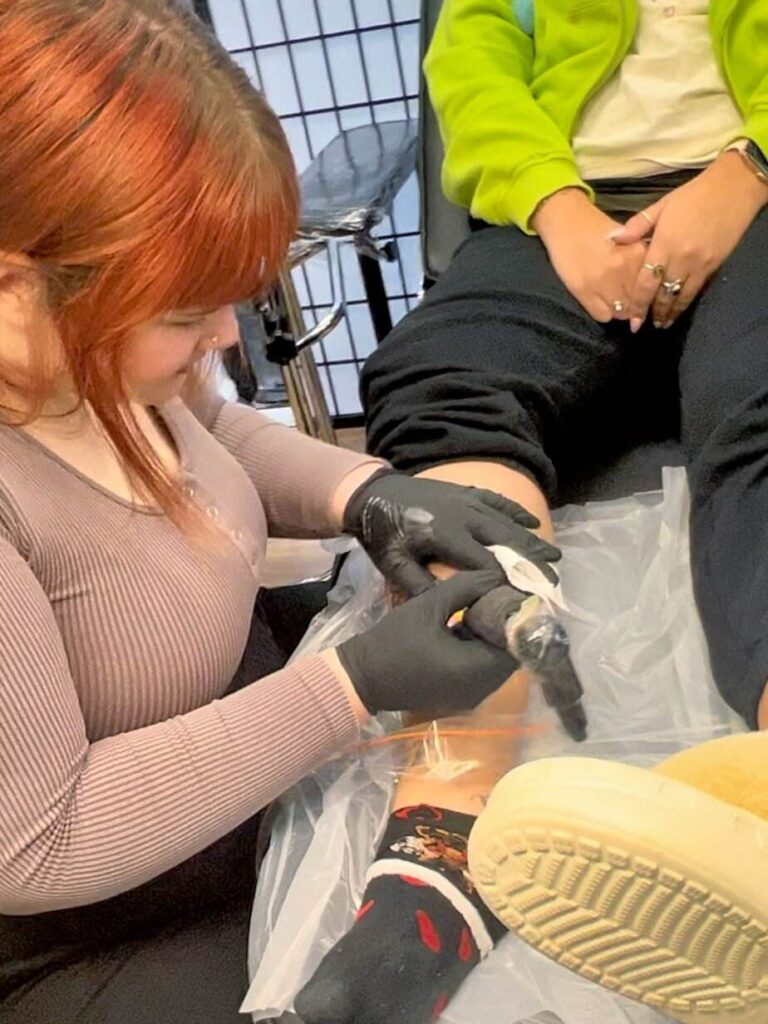
Now that you have a clearer understanding of the tattoo styles and their popular designs, the next step is selecting the right artist. An artist’s skill set and style can significantly impact your tattoo experience and the final outcome.
Why Artist Selection Matters
Choosing the right tattoo artist is essential for several reasons:
- Skill Level: Artists have varying levels of expertise in realism or traditional forms. Review portfolios to assess their proficiency in the style you desire.
- Hygiene and Safety: Finding a reputable artist who prioritizes cleanliness and follows safety protocols is critical to ensuring a safe tattooing experience.
How to Find Your Match**
- Research: Look for artists whose styles resonate with your vision. Social media platforms and tattoo conventions often showcase their work effectively.
- Consultation: Schedule a meeting to discuss your ideas and gauge the artist’s enthusiasm and understanding of your vision.
Investing time in finding the right artist will ensure that your tattoo is not only beautifully executed but also reflective of your personal story and style.
Client Satisfaction and Long-Term Effects
After selecting the right tattoo style and artist, understanding client satisfaction and the long-term effects of tattoos becomes crucial. A tattoo isn’t just a transient moment; it’s a lifelong commitment that should inspire pride and joy.
Ensuring Client Satisfaction
- Communication: A successful tattoo experience hinges on clear communication between you and the artist. Discussing expectations, design choices, and any concerns can lead to a more satisfying outcome.
- Aftercare: Following proper aftercare instructions is vital. This not only helps in healing but also ensures the tattoo retains its quality over time.
Long-Term Considerations**
- Fading and Maintenance: Depending on the style and colors chosen, some tattoos may fade with time. Regular touch-ups may be necessary to maintain vibrancy, especially with realism tattoos.
- Personal Evolution: As you grow and change, your perception of your tattoo may evolve. Choosing a design that carries personal significance will help maintain its importance, regardless of life changes.
Ultimately, a well-executed tattoo that reflects personal meaning can become a cherished part of your identity for years to come.
Conclusion
As we conclude our exploration of realism and traditional tattoos, it’s essential to recognize that each style holds unique qualities that cater to individual preferences and expressions. Choosing the right tattoo involves understanding various factors, including aesthetics, color approaches, pain levels, and personal storylines.
Key Takeaways
- Personal Expression: Both realism and traditional tattoos serve as profound forms of self-expression, allowing individuals to embody their stories and identities.
- Artist and Design Matters: Selecting a skilled artist who aligns with your vision is crucial in achieving a satisfying result.
- Long-Term Satisfaction: Considerations of maintenance and personal significance ensure that your tattoo continues to resonate throughout your life.
Ultimately, the tattoo journey is not just about ink on skin; it’s about embracing a piece of art that speaks to who you are, making this experience unforgettable and meaningful.

